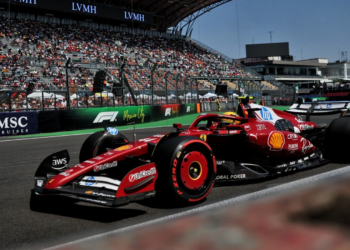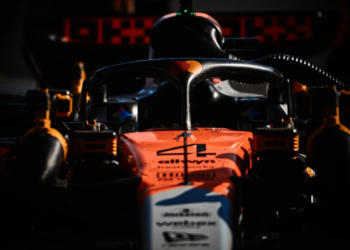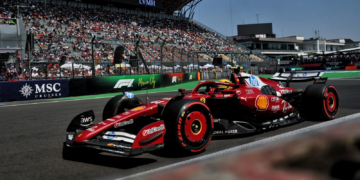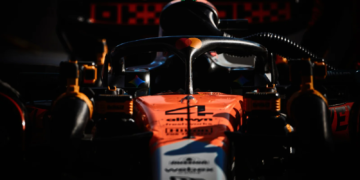Formula 1 is not just about speed, but also about strategy, precision, and the delicate balance between performance and compliance. Amidst the roar of engines and the drama on track lies a complex financial and operational structure that dictates who can compete at the top.
Recently, an investigation into the ‘very minor’ cost cap violation by the Aston Martin Formula 1 Team and its subsequent reshuffling of backup drivers has brought up again the question of how teams balance desire with accountability in one of the world’s most expensive sports.
For example, just as social casino platforms are finding a balance between entertainment, regulation and responsibility, so Formula 1 teams are learning to deal with the same balance – pushing boundaries while working to stay within defined limits.
Both industries provide a good example of how compliance, innovation and engagement must co-exist for sustainable success.
Cost-cap landscape and related issues
Implemented in 2021, Formula 1’s cost-cap system was intended to create more equality between teams by capping the amount each team could spend on car development and operations each season.

The purpose was to level the playing field and ensure that financial giants could not spend more than their competitors and outbid them. In 2024, the cap was estimated at around $135 million, excluding overhead costs such as driver salaries, marketing, and executive compensation.
Aston Martin’s “very minor” infraction, as described by the FIA, doesn’t point to malice or deliberate overspending. Instead, it points to the massive increase in sophistication and complexity of the financial rules. With teams under tremendous pressure to find innovative approaches within tight financial margins, the smallest accounting discrepancy can trigger red flags.
The FIA’s determination that Aston Martin’s violation was procedural, not performance-related, highlights an important fact: Formula 1 is now as much a business as a sport, and the financial side is just as important as the engineering side.
Being successful in modern Formula 1 means not only that teams must build fast cars, but also that they must operate financially efficient organisations that can cope with stringent compliance requirements.
Why small breaches are not insignificant
When a cost cap is breached, its impact extends beyond the balance sheet. First, it provides sponsors and partners with an indication of how well teams are keeping a lid on resource spending. In a sport where power is weighted on perception, reputation is everything.
The procedural error might not be detrimental, but it will still raise questions about internal controls and governance. For the FIA, even small-scale transparency is critical to ensure credibility. If the minor violations went unchallenged, the entire cost-cap system would fall apart in the face of claims of inconsistency or favouritism.
The message is obvious: every dollar counts, and every detail is significant…
Aston Martin’s swift response to the FIA probably saved it from sanctions, but the incident is a cautionary tale for the whole paddock. Team accountants and compliance officers were not previously as much a part of the race effort as aerodynamicists and race engineers.
Still, in the cost-cap era, these individuals have become a vital component of the race effort. Fiscineer is no longer an administrative discipline; it’s a competitive advantage.
The reserve driver puzzle
In addition to its pricing conundrum, Aston Martin recently hit the headlines by replacing reserve drivers, which might seem small, but has significant business implications. Reserve drivers are an essential part of the modern Formula 1 team, serving as backup drivers, test pilots, and brand ambassadors.
These junior drivers are frequently the face of the team, appearing in promotional activities and at simulator presentations and often are the sole representatives of the track at corporate events.

A driver rotation or replacement is about far more than sporting issues and represents a change in the longer-term strategy and commercial priorities. With a reserve driver backed by strong sponsorship, market appetite, and/or development potential, a driver can be a catalyst for partnerships and acquiring new audiences.
For Aston Martin, this move implies recalibrating the talent pipeline and business positioning. However, as the team becomes increasingly competitive, sponsors and investors are paying closer attention, and matching the right driver to the brand story is part of keeping that momentum going.
Reserve drivers are also essential participants in the testing ecosystem. With strict restrictions on in-season testing, simulator data and feedback are invaluable. Inviting the right reserve driver, someone who can read data accurately and consider input from lead drivers, can directly impact the development of the car and its potential future performance.
Ambition and accountability, finding a balance
The twin changes at Aston Martin—the cost-cap breach and the reserve-driver swap—highlight a deeper truth about Formula 1’s business environment; teams face a perpetual struggle between ambition and accountability. Whether financial or technical, modern F1 is really all about marginal gains.
In a time when data analysis and fiscal responsibility converge with engineering, the capacity to innovate responsibly has emerged as an indicator of success. Not only are teams competing for points, but also for efficiency, compliance, and sustainability. Every decision, from budgetary allocations to personnel management, affects not only the performance of the car but also the team’s overall financial and reputational well-being.
For Aston Martin, these developments highlight an organisation that is maturing and learning to navigate the complex Formula 1 ecosystem. The team has quickly moved from middle of the pack to a podium threat, and with this change comes more scrutiny. The challenge that sets top-level racing is balancing this growth with integrity.

The broader lesson for Formula 1 teams
The Aston Martin case shows how the future of the sport depends on the successful balance between innovation and regulation. Formula 1 has gradually become a world of business, where each team operates as a business and must abide by a set of rules governing accountability and strategy.
The organisations that succeed in this environment are those that make compliance part of who they are, rather than seeing it as a constraint.
Ultimately, the cost-cap system and team management dynamics bring Formula 1 one step closer to sustainable excellence. The commercial success of the sport relies not just on exciting racing, but on trust—trust that every team plays on a level playing field, that every dollar is accounted for, and that every decision is made with passion and professionalism.
As Aston Martin’s rise in the constructors’ standings continues, its recent history offers not only a lesson but also a look into the face of modern Formula 1; in today’s racing world, commercial discipline is as crucial to performance as hustle.









